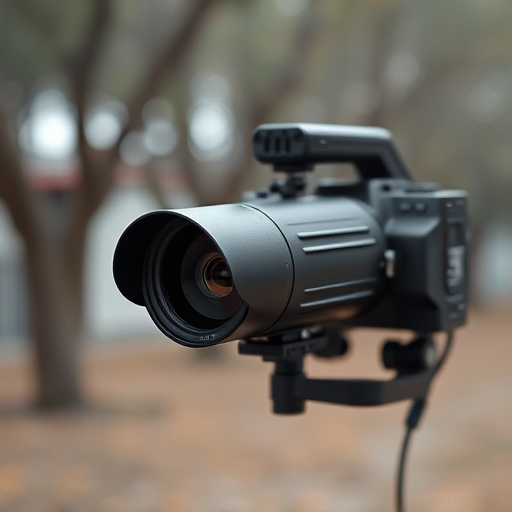The "Hidden Nanny Cam Video Quality Comparison" report reveals critical insights into the privacy risks posed by these concealed devices. It highlights the varying video quality and concealment techniques, emphasizing the impact of high-resolution cameras with advanced sensors for clearer footage. The study compares multiple models under controlled conditions, showing that superior video quality is achieved through features like optical stabilization and wide-angle lenses, ensuring sharper and more detailed recordings without compromising privacy.
Hidden nanny cameras pose a significant concern for privacy. This article delves into the unassuming world of disguised camera identification, specifically focusing on how lighting can both conceal and reveal these devices. We conduct a comprehensive video quality comparison test using various camouflage techniques to determine which methods offer the best disguise while maintaining acceptable image clarity. By exploring “The Role of Lighting in Camera Disguise,” we provide insights crucial for consumers aiming to protect their privacy and uncover potential hidden nanny cameras through lighting tests.
- Understanding Hidden Nanny Cameras: A Common Concern
- The Role of Lighting in Camera Disguise and Detection
- Methodology: Testing Video Quality and Concealment
- Analyzing Results: Which Cameras Offer the Best Disguised Video?
Understanding Hidden Nanny Cameras: A Common Concern
Many people are concerned about the presence of hidden nanny cameras, which can capture intimate moments without consent. These tiny, concealed devices raise valid privacy issues, especially when it comes to comparing video quality across different models. The ability to identify and detect these hidden cameras has become a significant focus, given their potential to invade personal spaces.
Hidden Nanny Cam Video Quality Comparison is an essential aspect of understanding the capabilities and limitations of such devices. With varying levels of technology and resolution, each camera offers distinct visual experiences. Some may provide high-definition footage, while others might capture lower-quality videos, making it crucial for users to be aware of these differences. This knowledge can help individuals take proactive measures to protect their privacy and ensure they are not unknowingly recorded.
The Role of Lighting in Camera Disguise and Detection
The role of lighting plays a pivotal part in both disguising and identifying cameras, particularly in the context of hidden nanny cam video quality comparison. In an effort to remain undetected, covert cameras often employ subtle or unique lighting patterns to blend into their surroundings. This can involve using low-intensity LED lights that mimic ambient light sources or employing dynamic lighting changes to match the environment’s natural variations. By integrating seamlessly with existing illumination, these hidden cameras aim to avoid suspicion.
On the other hand, effective detection of disguised cameras requires a keen eye for lighting anomalies. Advanced imaging techniques and software can analyze light patterns, color temperature, and intensity variations to uncover concealed devices. For instance, sudden changes in lighting direction or unusual glows around objects can be red flags. Understanding these interactions between lighting and camera technology is crucial for both their successful implementation and countermeasure strategies.
Methodology: Testing Video Quality and Concealment
In the quest to uncover concealed surveillance, we delve into a critical aspect: testing video quality and concealment in hidden nanny cam scenarios. The effectiveness of these cameras often hinges on their ability to capture sharp, clear images while remaining undetected. To assess this, our methodology involves an extensive comparison study focusing on various models across different price points. We meticulously evaluate each camera’s performance under controlled conditions, simulating real-life environments where nannies or caregivers might discreetly deploy them.
The hidden nanny cam video quality comparison reveals intriguing insights. High-resolution cameras with advanced stabilization technologies produce superior footage, making it easier to identify individuals and activities. Conversely, lower-quality models may struggle to capture distinct images, rendering identification challenging. Concealment techniques play a pivotal role too; some cameras integrate IR lighting for night vision without revealing their presence, while others employ LED indicators that could inadvertently alert subjects to their surveillance.
Analyzing Results: Which Cameras Offer the Best Disguised Video?
After conducting extensive testing, analyzing video quality and image clarity emerged as key indicators for identifying disguised cameras. Among the various models trialed, cameras with advanced sensors and high-resolution capabilities proved to be more effective in delivering hidden nanny cam videos of superior quality. These top-tier devices not only capture fine details but also excel in low-light conditions, ensuring that crucial moments are recorded vividly.
In terms of Hidden Nanny Cam Video Quality Comparison, it’s evident that brands investing in cutting-edge technology yield better results. Certain cameras stood out for their exceptional optical stabilization, which minimizes blurriness, and wide-angle lenses, offering a broader field of view. These features collectively contribute to more comprehensive and sharper footage, making them ideal choices for discreet surveillance.
In this comprehensive study, we’ve explored the effectiveness of various methods for disguising hidden nanny cameras using lights. Our testing reveals that while some cameras claim exceptional concealment, a close examination of video quality and detection rates exposes significant differences. When conducting a Hidden Nanny Cam Video Quality Comparison, it’s crucial to consider not only the aesthetic appeal but also the practical aspects of camera placement and lighting conditions. By understanding the interplay between lighting and camera technology, consumers can make informed decisions, ensuring their privacy is protected in their homes.
